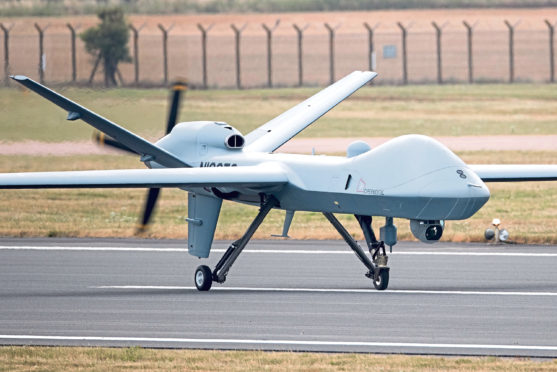
Drones have become more common over the past decade but their history stretches further back than you might think.
Author Steve Mills explores their history in Dawn Of The Drone – and he tells Stevie Gallacher The Honest Truth about these unmanned flying vehicles.
Are drones much older than we think?
Priceless parts dating from 1917 of the world’s first full-sized military drone aircraft are carefully preserved in the Imperial War Museum stores – so, yes, the first drone aircraft flew a lot earlier than most would think.
For centuries the military have used unmanned weapons, many using fire such as tar barrels and fire ships. For a long time before the Great War, balloons were used to send messages and, at times of conflict, more deadly cargoes. But to call these drones is a bit of a stretch. They fall into the group of “launch and forget” unmanned craft because they cannot be controlled en route.
What was the first drone, and how did it work?
The few serious books that exist on this subject record that “aerial target” aircraft produced for and tested by the Royal Flying Corps in 1917 were the first drone aircraft.
There were a number of different designs of these drones created by the well-known British aircraft factories of the First World War. They all used the small, two-cylinder Gnat engine designed by Granville Bradshaw and a control system designed at Dr Low’s secret Royal Flying Corps Experimental Works.
The de Havilland version was tested at Upavon, on Salisbury Plain. The first prototype of this design suffered engine failure but the next launched correctly and, crucially, it responded to the control signals from the ground.
On March 21, 1917 this was the first drone aircraft to fly.
Who was Professor Archibald Low, and what role did he play in the development of drones?
Professor AM Low became known, eventually, as “The Father of Radio Guidance Systems”.
Low came to command the secret RFC Experimental Works and develop the control system for the first drones. This was a consequence of his development of a television system in 1914.
We know how this very early TV system worked with a sensor array camera and digital screen.
How effective were early drones?
Like the Wright brothers’ flyer in 1903, the 1917 RFC drones were not an end product but an inspiration for continued development. The success of the RFC Aerial Target programme was recognised immediately and its remote control system was adapted for use in the crewless, fast, explosive versions of the torpedo boats which were themselves a new development by the Royal Navy.
Crucially, the vulnerability of capital ships and civilian populations to air attack was recognised – and this created a market for aerial target drones upon which the marine and land defence forces could hone their anti-aircraft skills.
How did drones change by the Second World War?
The Germans had developed offensive drone weapons by 1943, while Britain had only used drones as tools to improve countermeasures against aircraft. Guided after launch, the German Henschel Hs 293 and the Fritz X were their most effective drones.
The more famous Doodlebug must be classed as a “launch and forget” weapon, not a drone.
What would surprise us about drone history?
The Second World War accident which killed Joe Kennedy represents probably the greatest impact drones have had on the world. Joe did not parachute out of his Doolittle Doodlebug drone bomber as planned because it exploded prematurely.
JFK would probably not have gone on to become President of the USA if his older brother had survived.
Did other countries use drones?
By the 1950s all sorts of unmanned aerial projects started. The USA converted a few aircraft to remote control during the 1930s. In the early 40s the Radioplane Company in the USA produced the first mass-produced drone Aerial Targets.
Dawn Of The Drone by Steve Mills is out next week

Enjoy the convenience of having The Sunday Post delivered as a digital ePaper straight to your smartphone, tablet or computer.
Subscribe for only £5.49 a month and enjoy all the benefits of the printed paper as a digital replica.
Subscribe